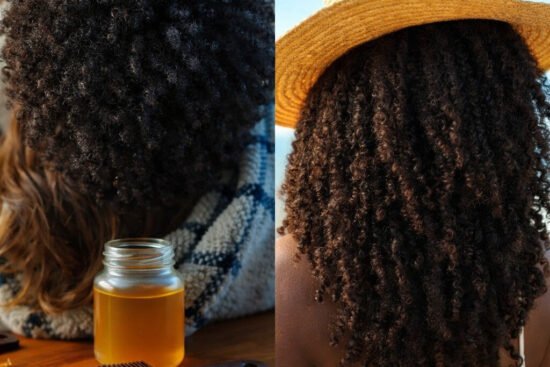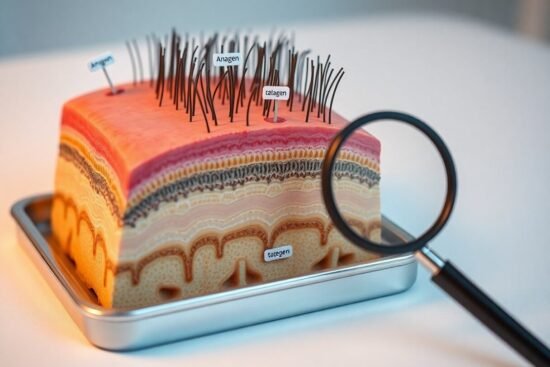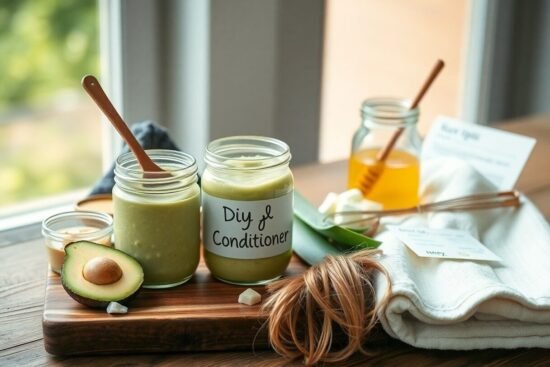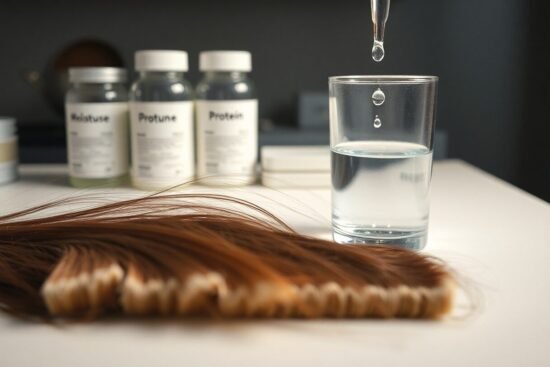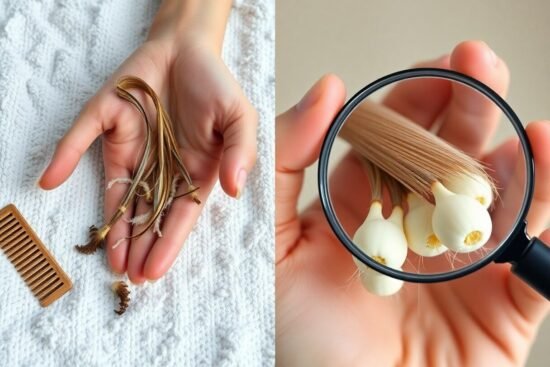
You’re in for a fascinating journey into the world of haircare as we explore the unique practices of women in Africa. From the diverse landscapes of this vibrant continent emerges a diverse range of haircare techniques that have been passed down through generations. We’ll uncover the secrets behind their luscious locks and discover how these practices are deeply rooted in culture, tradition, and self-expression. But don’t fret, the knowledge you’ll gain here isn’t just limited to African women – we’ll also briefly touch upon the question that might be on the minds of many white females: how often should you wash your hair? So, get ready to uncover the beauty rituals that have stood the test of time and find inspiration to care for your own tresses along the way.
Understanding African Hair
African hair is characterized by its unique features, which set it apart from other hair types. The hair strands are tightly coiled and have a distinct curl pattern, commonly referred to as “kinky” or “coily.” This texture provides African hair with its natural strength and resilience. However, African hair also tends to be fragile and prone to breakage if not properly cared for. It is important to understand these unique characteristics in order to develop effective hair care practices for African hair.
Throughout history, hair has played a significant role in African cultures. Hair has been used as a form of self-expression, identity, and cultural symbolism. In many African societies, hairstyles were intricately woven and adorned with beads, shells, or other embellishments. These hairstyles often conveyed messages about a person’s age, marital status, social status, or even their tribal affiliation. Hair was seen as a powerful means of communication, allowing individuals to showcase their heritage and express their creativity.
Unfortunately, there have been numerous misconceptions and stereotypes surrounding African hair. One common misconception is that African hair is inherently unmanageable or unkempt. This is far from the truth. With the right knowledge and care, African hair can be healthy, vibrant, and versatile. It is essential to debunk these misconceptions and promote a more accurate understanding of African hair.
Common Hair Care Techniques
Washing African hair is an essential part of maintaining its health and cleanliness. It is generally recommended to wash African hair once every one to two weeks, although individual preferences may vary. When washing, it is important to use sulfate-free shampoos that are gentle on the hair and scalp. This helps to prevent excessive dryness and breakage. Additionally, frequent moisturizing and conditioning are crucial to keep the hair hydrated and minimize frizz.
Conditioning is a vital step in African hair care. Deep conditioning treatments should be done regularly to provide intense moisture and nourishment to the hair. This helps to restore any lost moisture, improve elasticity, and minimize damage. It is advisable to use products specifically formulated for African hair that contain ingredients such as shea butter, coconut oil, or aloe vera, which provide excellent hydration and strengthen the hair.
Detangling and styling African hair require patience and gentle handling. Using a wide-toothed comb or fingers, starting from the ends and working your way up, helps to prevent breakage and minimize pain or discomfort. Protective styling, such as braids, twists, or buns, can help to reduce manipulation and protect the hair from damage. These styles also promote hair growth by retaining length and preventing excessive tangling.
Traditional Hair Care Methods
Ancestral hair care techniques have been passed down through generations in African cultures. These methods involve the use of natural remedies to nourish, strengthen, and beautify the hair. For instance, applying oils like argan oil or castor oil to the scalp and hair helps to moisturize and promote growth.
Traditional hairstyles also hold significant cultural and spiritual importance. They often vary by region, tribe, or occasion. Some examples include Bantu knots, Fulani braids, or Maasai beaded hairstyles. These hairstyles preserve the integrity of the hair while showcasing the unique beauty and heritage of African cultures.
Modern Hair Care Methods
In recent years, there has been a surge in the availability of contemporary hair care products specifically tailored for African hair. These products cater to the diverse needs and preferences of individuals with different hair textures. From moisturizing shampoos and conditioners to styling creams and gels, the options are endless.
The natural hair movement has significantly influenced modern hair care practices for African hair. This movement encourages embracing one’s natural hair texture and avoiding chemical relaxers or straighteners. Many individuals have transitioned to natural hair and embraced their coily or curly hair patterns. This shift has sparked a demand for products that cater to natural hair textures and promote their unique beauty.
While embracing natural hair is important, some individuals may choose to incorporate heat or chemical treatments into their hair care routines. Heat styling tools like flat irons or curling wands can be used to temporarily straighten or curl the hair, while chemical treatments such as keratin treatments or relaxers can alter the hair’s natural texture. However, it is crucial to use these methods sparingly and take measures to protect the hair from damage.
Hair Care During Adulthood
As women transition into adulthood, their hair care rituals may evolve to accommodate their changing needs. Regular trims are essential for maintaining healthy hair, as they prevent split ends and breakage. Additionally, adult women should pay attention to their dietary habits, as proper nutrition is essential for promoting hair health. Consuming a balanced diet rich in vitamins, minerals, and protein helps to nourish the hair from within.
Challenges in maintaining healthy hair as an adult can arise from various factors such as hormonal changes, stress, or lifestyle choices. It is crucial to find a hair care routine that works best for you and adapt it accordingly. Experimenting with different products and techniques, as well as seeking advice from professionals, can help address any specific concerns or challenges.
Hair Care During Pregnancy and Post-Partum
Pregnancy brings about hormonal changes that can affect hair growth and texture. Many women experience an increase in hair volume and thickness during pregnancy due to elevated estrogen levels. However, after giving birth, some women may experience post-partum hair loss. This is a normal phase in which the hair sheds as hormone levels return to normal.
To care for their hair during pregnancy and post-partum, women should focus on maintaining a balanced diet, staying hydrated, and avoiding stress. Gentle cleansing, moisturizing, and protective styling can help minimize breakage and maintain healthy hair growth. It is important to consult with healthcare professionals for personalized advice and guidance during this transformative period.
Hair Care During Childhood
Caring for a child’s hair requires patience, gentleness, and age-appropriate products. Regular washing is essential to keep their hair clean and free from build-up. It is advisable to use child-friendly shampoos and conditioners that are gentle on their delicate scalp and hair.
Gentle detangling techniques and avoiding tight hairstyles that can cause tension or pain are key in caring for a child’s hair. Keeping their hair moisturized with natural oils or child-friendly leave-in conditioners helps to prevent dryness and breakage. Simple hairstyles like ponytails, braids, or twists are popular choices for young girls, as they provide convenience and minimize manipulation.
Hair Care During Old Age
As women enter old age, hair undergoes various changes due to hormonal and aging processes. Hair may become thinner, drier, or more brittle. It is important to provide extra care and attention to maintain its health and vitality. A balanced diet rich in nutrients, particularly proteins and antioxidants, supports hair health from within.
Gentle cleansing and conditioning with products formulated for mature hair help to retain moisture and promote growth. Special attention should be given to scalp health, as dryness or flakiness may occur. Scalp massages with natural oils can provide nourishment and stimulate blood circulation. Considering shorter hairstyles can also make hair care more manageable and less demanding.
Role of Traditional Healers in Hair Care
Traditional healers have long played a vital role in maintaining hair health in many African cultures. These healers possess knowledge of natural remedies and ancestral practices that have been used for centuries. They often recommend specific routines and remedies tailored to individuals’ unique hair types and concerns.
Herbs, oils, or barks are commonly used in hair care remedies suggested by traditional healers. These natural ingredients are believed to possess healing properties that nourish the hair and scalp. Traditional healers also emphasize the importance of holistic well-being, recognizing that external and internal factors contribute to hair health.
In modern hair care practices, there is a growing trend towards incorporating traditional healing methods. Many individuals are rediscovering the benefits of natural remedies and seeking to integrate them into their hair care routines. This integration not only promotes cultural preservation but also offers a holistic approach to hair care.
Effect of Urbanization on Hair Care Practices
Urbanization has brought about significant changes in hair care practices in African societies. With the influx of globalized influences, individuals are exposed to a wider range of hair care options and trends. As a result, new techniques, products, and styles have emerged, catering to diverse preferences and allowing for greater experimentation.
However, urbanization also poses challenges to traditional hair care practices. Factors such as pollution, hard water, or environmental stressors can have adverse effects on hair health. Additionally, the fast-paced urban lifestyle may make it more difficult for individuals to prioritize and maintain consistent hair care routines. This underscores the need for adaptability and finding innovative ways to blend traditional and modern hair care practices.
In conclusion, understanding African hair and its unique characteristics is essential in developing effective hair care practices. It is important to celebrate the cultural significance of hair in African societies and debunk any misconceptions surrounding African hair. By embracing both traditional and modern hair care methods, individuals can maintain healthy and vibrant hair throughout different stages of life. Whether it is during adulthood, pregnancy, childhood, or old age, caring for African hair requires patience, knowledge, and a holistic approach. By incorporating traditional knowledge and adapting to the challenges and opportunities presented by urbanization, individuals can navigate the ever-evolving landscape of hair care with confidence and pride.






